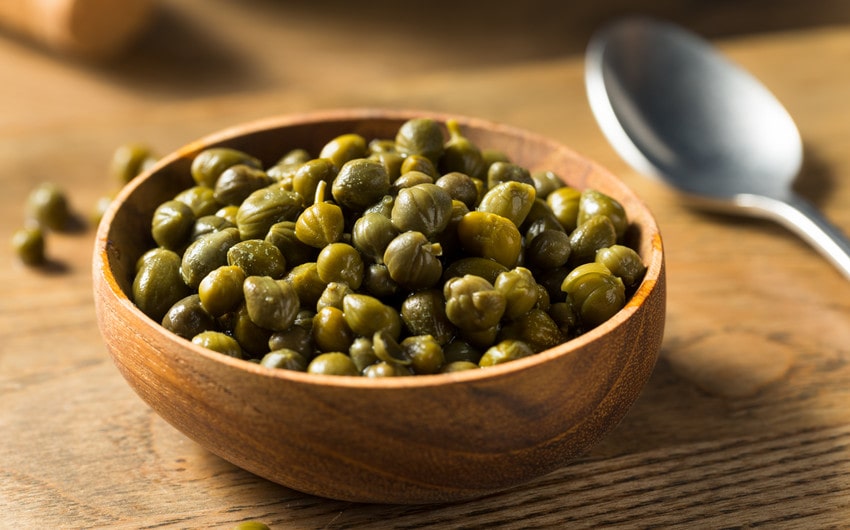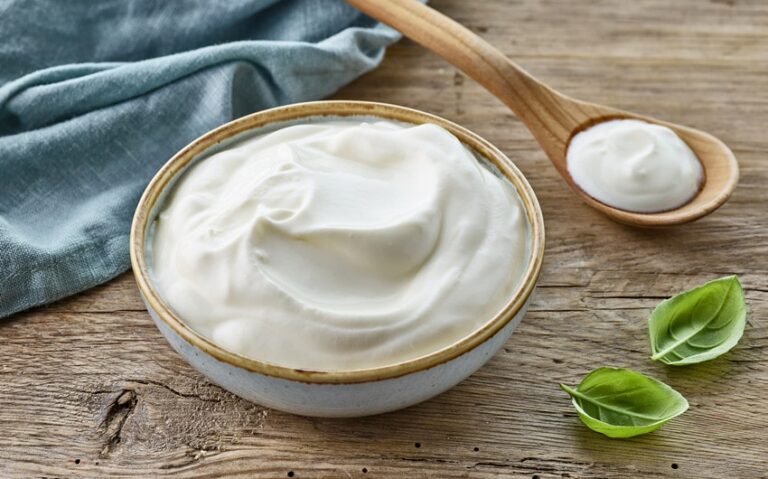What Are Capers? A Complete Guide to This Unique Ingredient
Capers are those tiny, tangy bursts of flavor you often find in Mediterranean dishes. But have you ever wondered what they actually are? These little green buds come from the caper bush and are typically pickled or brined, giving them their distinctive taste. Used in recipes ranging from pasta sauces to salads, capers add a unique zing that enhances many meals.
If you’re curious about their origins, uses, and nutritional benefits, keep reading to find out more. So, what are capers? Let’s dive in and explore everything you need to know about this intriguing ingredient.
What Exactly Are Capers?
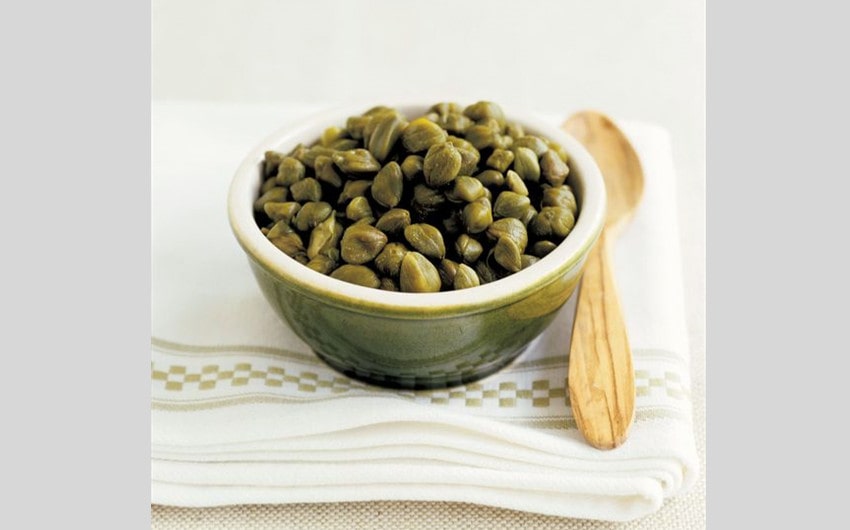
Image source: Pinterest
Capers are the small, green flower buds of the caper bush (Capparis spinosa), which are harvested before they bloom. These buds are then typically pickled or brined, which gives them their distinctive tangy and salty flavor.
The caper bush is a perennial plant native to the Mediterranean region. It thrives in arid, rocky soils and is often found growing wild in countries like Italy, Greece, and Spain. The buds are hand-picked early in the morning to maintain their delicate structure and flavor. After harvesting, they are dried in the sun before being cured in vinegar, brine, or salt.
Capers come in various sizes, with smaller ones being more delicate and flavorful, while larger ones tend to be milder. There are also caper berries, which are the fruit of the caper bush and are larger and more oval-shaped than caper buds. Both capers and caper berries are used in cooking, adding a burst of flavor to dishes like pasta, salads, and sauces.
In summary, capers are the pickled or brined flower buds of the caper bush, known for their tangy taste and widespread use in Mediterranean cuisine.
Where Are Capers Grown and Sourced?
Capers are primarily grown in the Mediterranean region, where the climate and soil conditions are ideal for the caper bush (Capparis spinosa). Countries like Italy, Spain, Greece, and Turkey are well-known for producing high-quality capers.
In Italy, especially in Sicily and Pantelleria, capers are a staple ingredient, renowned for their exceptional flavor. Greece also produces flavorful capers, particularly from the islands and coastal areas, commonly used in traditional Greek dishes.
Turkey is another significant producer, offering capers often harvested from wild plants. These regions, along with parts of North Africa and the Middle East, provide the perfect environment for cultivating capers, making them available to food lovers worldwide.
In summary, capers thrive in dry, rocky soils and warm climates, primarily in Mediterranean countries.
What Do Capers Taste Like?
Capers have a unique, tangy flavor that is both salty and slightly sour, with a hint of bitterness. Their taste can be described as a blend of lemony tartness and briny saltiness, which comes from being pickled in vinegar or brined in saltwater.
When you bite into a caper, you’ll notice a firm texture followed by an intense burst of flavor. Smaller capers, known as nonpareils, are the most flavorful, while larger ones are milder but still retain the characteristic tanginess.
Capers are often compared to green olives due to their briny taste, but they are more tart and have a slightly floral note. They are also somewhat similar to pickles but less vinegary and more complex.
In cooking, capers brighten up rich and savory dishes. They add zest to creamy sauces, enhance tomato-based dishes, and provide a sharp contrast to fatty meats and fish. Common dishes featuring capers include pasta puttanesca, chicken piccata, and various types of tapenade.
What are the Varieties of Capers?
Capers come in several varieties, each with its own unique characteristics and culinary uses. The most common types are categorized by their size and the stage at which they are harvested from the caper bush (Capparis spinosa).
1. Nonpareil Capers
Nonpareil capers are the smallest and most sought-after, typically less than 7 millimeters in diameter. Known for their delicate texture and intense flavor, they are considered the highest quality capers and are often used in gourmet cooking. Their small size blends seamlessly into sauces, salads, and garnishes.
2. Surfine Capers
Slightly larger than nonpareils, surfine capers measure between 7 and 8 millimeters in diameter. They offer a similar flavor but with a more robust texture, making them versatile for various dishes, from pasta sauces to meat dishes.
3. Capote Capers
Capote capers range from 8 to 9 millimeters in diameter. These medium-sized capers are commonly used in Mediterranean cuisine and provide a balanced flavor and texture, ideal for recipes requiring a more pronounced caper taste like chicken piccata or tapenade.
4. Capers in Brine
Capers preserved in brine are typically larger, 9 to 11 millimeters in diameter. The brine solution, made of water, vinegar, and salt, maintains their firm texture and enhances their tangy flavor, making them suitable for stews and braises.
5. Caper Berries
Caper berries are the fruit of the caper bush, significantly larger than caper buds, measuring up to 2 centimeters in diameter. They have a milder flavor and are often served as a snack or appetizer, similar to olives. Caper berries are usually pickled and can be added to salads, charcuterie boards, or used as a garnish.
6. Wild Capers
Wild capers are harvested from bushes growing in rocky, arid regions. These capers are smaller and more flavorful than cultivated varieties and are prized for their intense taste in traditional dishes from regions like Greece and Italy.
What is the Nutritional Value of Capers?
Capers may be small, but they offer a range of vitamins, minerals, and beneficial compounds that contribute to a healthy diet. Here’s a closer look at the nutritional value of capers:
Low in Calories
Capers are extremely low in calories, making them an excellent addition to dishes if you’re watching your calorie intake. A tablespoon of capers contains roughly 2 calories, so they can add flavor without significantly increasing the calorie content of your meal.
Rich in Sodium
Due to the pickling process, capers are high in sodium. One tablespoon of capers contains approximately 240 milligrams of sodium, which is about 10% of the recommended daily intake. While this high sodium content can enhance the flavor of dishes, it’s important to use capers in moderation, especially if you are on a low-sodium diet.
Vitamins and Minerals
Capers are a good source of several essential vitamins and minerals:
- Vitamin K: Capers provide a significant amount of vitamin K, which is important for blood clotting and bone health. A tablespoon of capers contains about 9% of the recommended daily intake.
- Iron: Capers offer a modest amount of iron, contributing to the production of red blood cells and overall energy levels.
- Copper: Capers are a source of copper, which plays a role in iron absorption and the maintenance of healthy bones, blood vessels, and nerves.
- Magnesium: Magnesium found in capers supports muscle and nerve function, as well as energy production.
Antioxidants
Capers are rich in antioxidants, including flavonoids like rutin and quercetin. These compounds help neutralize free radicals in the body, reducing oxidative stress and potentially lowering the risk of chronic diseases such as heart disease and cancer. Quercetin, in particular, has anti-inflammatory properties and may help reduce allergy symptoms.
Fiber Content
While not a major source, capers do contain a small amount of dietary fiber. Fiber is essential for digestive health, helping to regulate bowel movements and maintain a healthy gut microbiome.
Potential Health Benefits
The nutritional profile of capers suggests several potential health benefits:
- Anti-inflammatory Effects: The antioxidants in capers, particularly quercetin, have anti-inflammatory properties that can help reduce inflammation in the body.
- Bone Health: The vitamin K in capers supports bone health by aiding calcium absorption and bone mineralization.
- Digestive Health: The modest fiber content can support digestive health and regularity.
- Heart Health: The antioxidants in capers may contribute to heart health by reducing oxidative stress and inflammation.
How Are Capers Used in Cooking?
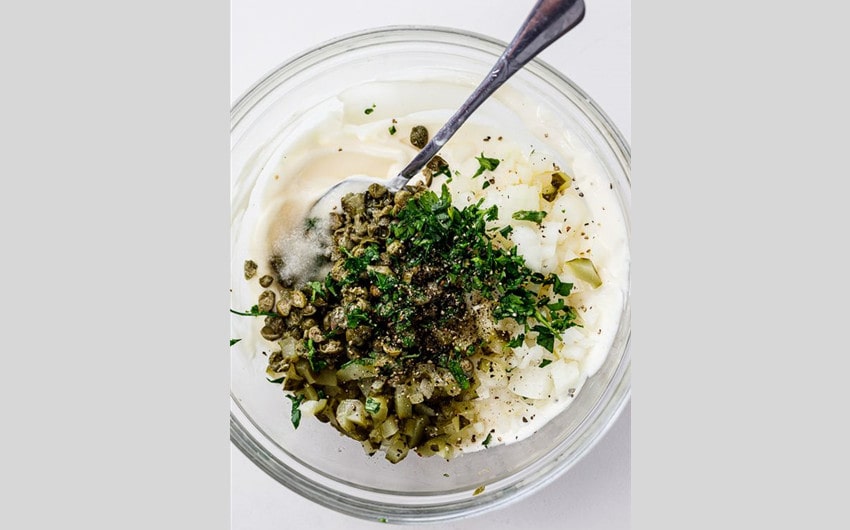
Image source: Pinterest
Capers are a versatile ingredient that adds a distinctive tangy and salty flavor to various dishes. They are commonly used to enhance sauces and dressings, such as tartar sauce, puttanesca sauce, and vinaigrettes, where their sharp taste complements other ingredients beautifully.
Capers are also popular as a garnish for dishes like smoked salmon, deviled eggs, and chicken piccata, adding both flavor and visual appeal. In salads, capers bring a burst of flavor that balances out other elements, especially in Mediterranean and potato salads.
When it comes to meats and fish, capers are often used in marinades and cooking liquids, providing depth of flavor to dishes like chicken piccata and grilled fish. They can also be baked into breads, such as focaccia, or used in spreads like tapenade.
Additionally, capers enhance the taste of stews and soups, offering a tangy note that balances richer flavors. Overall, capers are a valuable addition to many recipes, bringing a unique taste that elevates culinary creations.
How to Buy Capers?
When buying capers, you should consider the type, packaging, brand, appearance, and price. Capers come in various forms, primarily nonpareil (the smallest and most flavorful), surfine, capote (larger and milder), and caper berries. Look for capers preserved in brine or salt, with brined capers being ready to use and salt-packed capers requiring rinsing.
High-quality capers are usually a uniform green color and come from reputable brands, often sourced from regions like Italy or Spain. Check for an undamaged, sealed jar or can, and consider the price in relation to the brand and quality.
In the store, you can typically find capers in the condiment or international foods aisle. They are often located near olives, pickles, and other preserved foods. Look for a well-known brand to ensure you’re getting a good product. Remember to check the expiration date and storage instructions to ensure they maintain their best flavor and texture after purchase.
How to Preserve Capers?
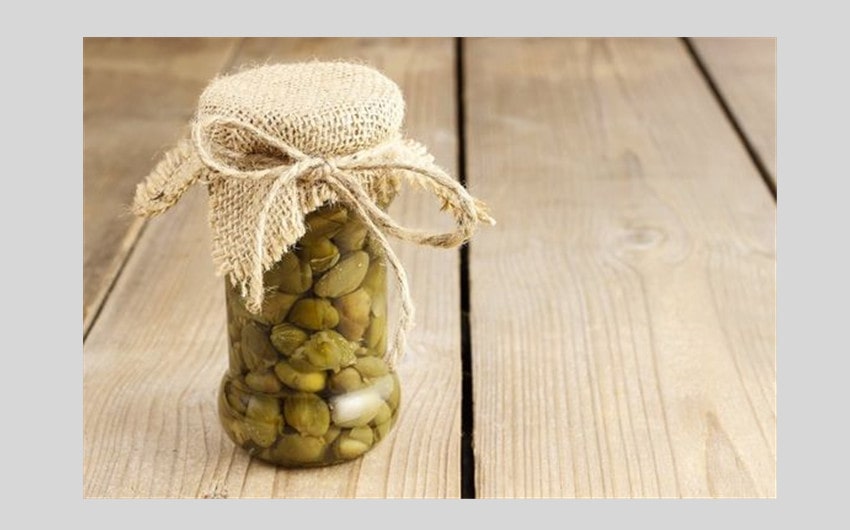
Image source: Pinterest
Preserving capers can be done effectively through two main methods: salting and brining. Both methods help maintain the flavor, texture, and longevity of capers, making them a versatile ingredient for various dishes. Here’s how to preserve capers using these two methods:
Salting Capers
Salting is a traditional method of preserving capers, often preferred for its simplicity and effectiveness in maintaining the capers’ natural flavor and texture. Here’s how to salt capers:
1. Harvesting and Cleaning
- Begin by harvesting fresh caper buds from the caper bush.
- Rinse the capers thoroughly under cold water to remove any dirt or impurities.
- Pat them dry with a clean paper towel or cloth.
2. Layering with Salt
- In a clean, dry container, spread a layer of coarse sea salt at the bottom.
- Place a layer of capers over the salt, ensuring they do not overlap too much.
- Add another layer of salt over the capers, covering them completely.
- Repeat the layering process until all the capers are covered in salt, ensuring the top layer is salt.
3. Curing Process
- Seal the container with an airtight lid to prevent moisture from entering.
- Store the container in a cool, dark place, such as a pantry, for about a week.
- After a week, drain any liquid that has accumulated at the bottom of the container.
- Repack the capers with fresh salt and store them for another week.
- Repeat this process for about three weeks to ensure the capers are fully cured.
4. Final Storage
- Once the capers are cured, they can be stored in an airtight container with fresh salt.
- Keep the container in a cool, dark place or the refrigerator.
- Properly salted capers can last up to a year. Before using, rinse the capers under cold water to remove excess salt.
Brining Capers
Brining is another popular method for preserving capers, involving soaking the capers in a mixture of water, vinegar, and salt. This method adds a tangy flavor to the capers. Here’s how to brine capers:
1. Harvesting and Cleaning
- Harvest fresh caper buds from the caper bush.
- Rinse the capers thoroughly under cold water to remove any dirt or impurities.
- Pat them dry with a clean paper towel or cloth.
2. Preparing the Brine
- In a saucepan, combine equal parts water and vinegar (preferably white wine vinegar) with salt.
- A typical ratio is 1 cup water, 1 cup vinegar, and 1-2 tablespoons of salt, but this can be adjusted to taste.
- Bring the mixture to a boil, stirring until the salt dissolves.
- Remove the brine from heat and let it cool to room temperature.
3. Brining Process
- Place the cleaned capers in a clean, sterilized jar.
- Pour the cooled brine over the capers, ensuring they are fully submerged.
- Seal the jar with an airtight lid.
4. Curing and Storing
- Store the jar in a cool, dark place for at least a week to allow the flavors to develop.
- After a week, move the jar to the refrigerator for long-term storage.
- Brined capers can last for several months in the refrigerator. Ensure the capers remain submerged in the brine to prevent spoilage.
Preserving capers through salting or brining ensures they retain their unique flavor and texture, making them a versatile addition to various dishes. Salting is a straightforward method that maintains the capers’ natural taste, while brining adds a tangy dimension. By following these preservation techniques, you can enjoy the delightful taste of capers for an extended period.
What Foods are Similar to Capers?
Capers have a unique tangy and salty flavor that can elevate many dishes. However, there are a few foods that share similar taste profiles and culinary uses. Here are the three most similar foods to capers:
1. Olives
Olives, particularly green olives, are often compared to capers due to their briny, salty flavor. Like capers, olives are typically cured in brine, which gives them a robust, savory taste. They can be used in many of the same dishes as capers, such as pasta sauces, salads, and tapenades. Olives come in various sizes and varieties, each with its own distinct flavor, ranging from mildly salty to intensely briny.
2. Pickles
Pickles, especially the smaller varieties like gherkins or cornichons, have a tangy and salty flavor similar to capers. Pickles are cucumbers that have been preserved in a vinegar brine, often with added spices and herbs. Their crunchy texture and sharp taste make them a good substitute for capers in recipes like tartar sauce, potato salad, and sandwiches.
3. Nasturtium Seeds
Nasturtium seeds, sometimes called “poor man’s capers,” are an excellent substitute for capers. These seeds come from the nasturtium plant and are often pickled in vinegar, giving them a tangy, peppery flavor. They can be used in the same way as capers, adding a burst of flavor to salads, sauces, and garnishes. Nasturtium seeds are also valued for their slightly spicy undertone, which can enhance the complexity of a dish.
While capers have a distinctive flavor, olives, pickles, and nasturtium seeds offer similar tangy, salty, and savory notes that can enhance a variety of dishes. Experimenting with these alternatives can help you achieve the desired flavor profile in your cooking, even when capers are not available.
Popular Recipes Featuring Capers
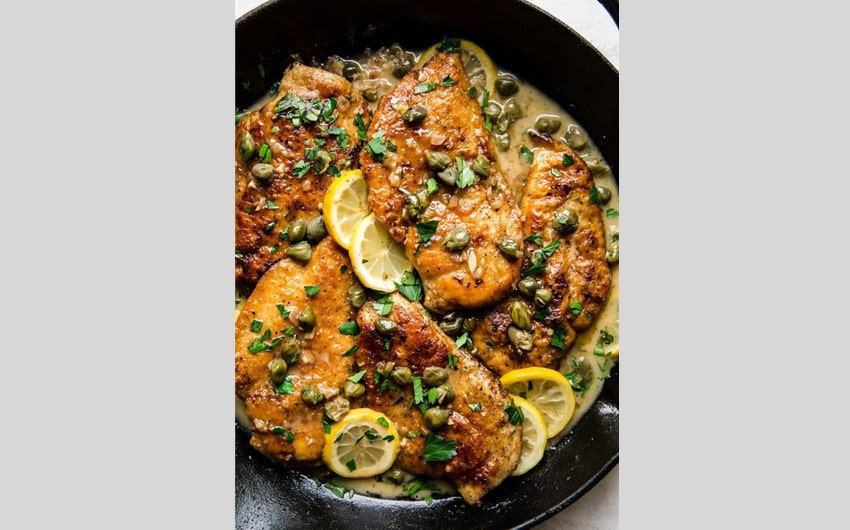
Image source: Pinterest
Capers are a versatile ingredient that can add a burst of tangy, salty flavor to a wide range of dishes. Here are some popular recipes that showcase capers as a key ingredient:
1. Chicken Piccata
Chicken Piccata is a classic Italian-American dish where capers shine. In this recipe, chicken breasts are pounded thin, dredged in flour, and pan-fried until golden. A sauce made from lemon juice, white wine, chicken broth, and capers is then poured over the chicken. The capers add a delightful briny tang that complements the lemony sauce and tender chicken.
Ingredients:
- Chicken breasts
- Flour
- Olive oil
- Lemon juice
- White wine
- Chicken broth
- Capers
- Butter
- Salt and pepper
Instructions:
- Pound the chicken breasts until thin.
- Dredge in flour and season with salt and pepper.
- Sauté in olive oil until golden brown and cooked through. Remove from pan.
- In the same pan, add lemon juice, white wine, and chicken broth. Bring to a boil.
- Stir in capers and butter, cooking until the sauce thickens slightly.
- Return chicken to the pan, spooning sauce over to coat.
- Serve immediately, garnished with extra capers and lemon slices.
2. Pasta Puttanesca
Pasta Puttanesca is a robust, flavorful Italian dish that makes excellent use of capers. This pasta sauce is a mix of tomatoes, olives, garlic, anchovies, and capers, creating a savory and slightly spicy dish. Capers add a burst of tanginess that balances the rich, salty flavors of the olives and anchovies.
Ingredients:
- Spaghetti or another pasta of choice
- Olive oil
- Garlic
- Anchovy fillets
- Crushed red pepper flakes
- Canned tomatoes
- Black olives
- Capers
- Fresh parsley
Instructions:
- Cook pasta according to package instructions until al dente. Drain and set aside.
- Heat olive oil in a large pan, sauté garlic and anchovy fillets until the anchovies dissolve.
- Add crushed red pepper flakes and cook for another minute.
- Stir in canned tomatoes, black olives, and capers. Simmer for 10-15 minutes.
- Toss the cooked pasta with the sauce until well coated.
- Garnish with fresh parsley and serve hot.
3. Tapenade
Tapenade is a flavorful spread made primarily from olives, capers, and anchovies, originating from the Provence region of France. It’s typically served as an appetizer with bread or crackers, or used as a condiment for meats and sandwiches. The capers provide a tangy contrast to the richness of the olives and anchovies.
Ingredients:
- Black or green olives
- Capers
- Anchovy fillets
- Garlic
- Olive oil
- Lemon juice
- Fresh herbs (like thyme or rosemary)
Instructions:
- In a food processor, combine olives, capers, anchovy fillets, and garlic.
- Pulse until the mixture is finely chopped but still has some texture.
- Gradually add olive oil and lemon juice, pulsing until a paste forms.
- Stir in fresh herbs and adjust seasoning to taste.
- Serve immediately with bread or store in the refrigerator for up to a week.
4. Nicoise Salad
Nicoise Salad is a classic French salad that includes capers as a key ingredient. This composed salad features fresh greens, tuna, hard-boiled eggs, tomatoes, olives, and capers, dressed with a tangy vinaigrette. The capers add a salty, briny flavor that complements the freshness of the vegetables and the richness of the tuna and eggs.
Ingredients:
- Mixed greens
- Tuna (canned or fresh)
- Hard-boiled eggs
- Cherry tomatoes
- Green beans
- Red potatoes
- Olives
- Capers
- Red onion
- Vinaigrette (olive oil, vinegar, Dijon mustard, salt, and pepper)
Instructions:
- Cook and cool the green beans and potatoes.
- Arrange mixed greens on a large platter.
- Add tuna, hard-boiled eggs, cherry tomatoes, green beans, potatoes, olives, capers, and red onion.
- Drizzle with vinaigrette and toss gently to combine.
- Serve immediately as a light, refreshing meal.
5. Salmon with Lemon Caper Sauce
Salmon with Lemon Caper Sauce is a simple yet elegant dish where capers play a crucial role in adding a burst of tangy, briny flavor. The capers complement the rich, fatty salmon and the bright, citrusy lemon sauce, creating a well-balanced and flavorful meal. This dish is perfect for a special dinner or a quick weeknight meal that feels indulgent yet healthy.
Ingredients:
- Salmon fillets
- Olive oil
- Lemon juice
- White wine
- Capers
- Garlic
- Butter
- Fresh parsley
Instructions:
- Season salmon fillets with salt and pepper.
- Sauté the fillets in olive oil until cooked through, then remove from the pan.
- In the same pan, add garlic and cook until fragrant.
- Deglaze the pan with white wine and lemon juice, then add capers and butter.
- Return the salmon to the pan and spoon the sauce over the fillets.
- Garnish with fresh parsley and serve.
6. Bagna Cauda
Bagna Cauda is a traditional Italian dipping sauce that highlights the intense flavors of capers, anchovies, and garlic. Served warm, this sauce is typically enjoyed with a variety of fresh vegetables. The capers add a salty and tangy punch, enhancing the overall richness of the dip. It’s a great way to introduce the robust flavor of capers to those who may not be familiar with them.
Ingredients:
- Olive oil
- Butter
- Garlic
- Anchovy fillets
- Capers
- Fresh vegetables (such as carrots, celery, bell peppers, and radishes)
Instructions:
- In a saucepan, heat olive oil and butter over low heat.
- Add minced garlic and anchovy fillets, stirring until the anchovies dissolve.
- Stir in capers and cook for a few more minutes.
- Transfer the mixture to a warm serving dish.
- Serve with fresh vegetables for dipping.
7. Caponata
Caponata is a Sicilian eggplant dish that showcases capers in a sweet and sour mix of tomatoes, olives, and vinegar. The capers add a distinct tangy note that balances the sweetness of the tomatoes and the richness of the eggplant. This versatile dish can be served as an appetizer, side dish, or condiment, bringing a burst of Mediterranean flavor to your table.
Ingredients:
- Eggplant
- Olive oil
- Onions
- Tomatoes
- Green olives
- Capers
- Vinegar (red wine or balsamic)
- Sugar
- Fresh basil
Instructions:
- Dice the eggplant and sauté in olive oil until golden and tender.
- In a separate pan, sauté onions until translucent, then add tomatoes, olives, capers, vinegar, and sugar.
- Combine the eggplant with the tomato mixture and simmer for 10-15 minutes.
- Garnish with fresh basil and serve warm or at room temperature.
8. Vitello Tonnato
Vitello Tonnato is a classic Italian dish where cold, thinly sliced veal is topped with a creamy tuna and caper sauce. The capers provide a sharp, tangy contrast to the rich, smooth sauce, enhancing the flavor of the veal. This dish is often served as an appetizer or a light main course, showcasing the unique combination of meat and fish flavors, brought together by the capers.
Ingredients:
- Veal roast
- Tuna (canned in oil)
- Mayonnaise
- Capers
- Lemon juice
- Anchovy fillets
- Olive oil
- Fresh parsley
Instructions:
- Roast the veal until tender, then let it cool and slice thinly.
- In a blender, combine tuna, mayonnaise, capers, lemon juice, anchovy fillets, and olive oil until smooth.
- Arrange the veal slices on a serving platter and cover with the tuna-caper sauce.
- Garnish with additional capers and fresh parsley before serving.
9. Spaghetti alla Puttanesca
Spaghetti alla Puttanesca is a robust pasta dish that combines tomatoes, olives, anchovies, garlic, and capers. The capers add a tangy, salty kick that balances the rich, savory flavors of the other ingredients. This dish is known for its bold and intense taste, making it a favorite for those who enjoy strong, vibrant flavors in their meals.
Ingredients:
- Spaghetti
- Olive oil
- Garlic
- Anchovy fillets
- Red pepper flakes
- Canned tomatoes
- Black olives
- Capers
- Fresh parsley
Instructions:
- Cook the spaghetti according to package instructions.
- In a large pan, heat olive oil and sauté garlic and anchovies until fragrant.
- Add red pepper flakes, canned tomatoes, olives, and capers, simmering until the sauce thickens.
- Toss the cooked spaghetti with the sauce.
- Garnish with fresh parsley and serve.
10. Chicken Marbella
Chicken Marbella is a flavorful dish where chicken is marinated with prunes, olives, capers, and herbs, then baked until tender. The capers add a sharp, briny element that cuts through the sweetness of the prunes and the richness of the olives. This dish is known for its complex, layered flavors and is a popular choice for festive occasions or dinner parties, impressing guests with its unique taste.
Ingredients:
- Chicken thighs or breasts
- Garlic
- Oregano
- Red wine vinegar
- Olive oil
- Prunes
- Green olives
- Capers
- Brown sugar
- White wine
Instructions:
- Marinate the chicken with garlic, oregano, red wine vinegar, olive oil, prunes, olives, and capers for several hours or overnight.
- Preheat the oven and arrange the chicken in a baking dish, pouring the marinade over it.
- Sprinkle brown sugar over the chicken and pour white wine around the edges.
- Bake until the chicken is cooked through and the top is golden.
- Serve the chicken with the pan juices and garnished with fresh herbs.
How Are Capers Used in Global Cuisines?
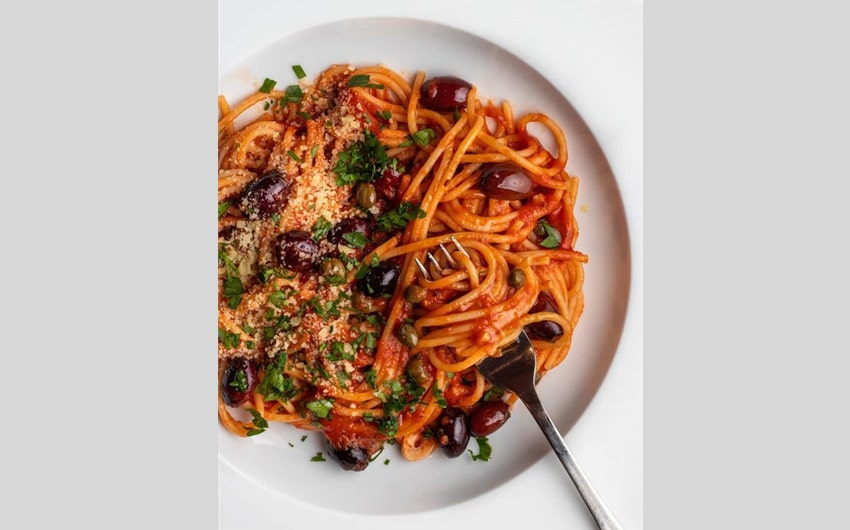
Image source: Pinterest
Capers are a versatile ingredient that are celebrated in various cuisines around the world for their distinctive tangy and salty flavor. Here’s a look at how capers are used in global cuisines:
Italian Cuisine
Capers are a staple in Italian cooking, especially in Southern Italy and Sicily. They are used in a variety of dishes to add a burst of flavor. In Italy, capers are commonly found in:
- Pasta Puttanesca: A robust pasta dish that includes capers, olives, anchovies, tomatoes, and garlic. The capers add a sharp tanginess that balances the rich, salty ingredients.
- Chicken Piccata: This dish features chicken breasts cooked in a sauce made of lemon juice, butter, white wine, and capers. The capers provide a salty contrast to the citrusy sauce.
- Veal Saltimbocca: A classic Roman dish where capers are used alongside prosciutto and sage to flavor the veal, providing a distinctive tang.
- Salads: Capers are often added to salads for extra flavor, such as in an Italian tuna salad or mixed into a vinaigrette.
French Cuisine
In French cuisine, capers are a key ingredient in many traditional dishes, adding a unique piquancy. Some popular French uses include:
- Tapenade: A spread made from capers, olives, and anchovies, often served on bread or crackers.
- Sauce Gribiche: A cold egg sauce made with hard-boiled eggs, capers, pickles, mustard, and herbs, typically served with cold meats or fish.
- Ravigote Sauce: A tangy vinaigrette-style sauce that includes capers, used to accompany meat, fish, or boiled vegetables.
- Nicoise Salad: A classic salad from the Nice region that includes capers, tuna, hard-boiled eggs, and olives, dressed with a vinaigrette.
Greek Cuisine
Capers are widely used in Greek cuisine, where their briny flavor complements the fresh, vibrant ingredients typical of the region. They are featured in:
- Greek Salad: Traditional Greek salads often include capers along with tomatoes, cucumbers, olives, and feta cheese.
- Ktapodi Me Kapari (Octopus with Capers): A dish where capers are used to enhance the flavor of tender octopus, often served with olive oil and lemon.
- Fried Capers: Capers are sometimes fried until crispy and used as a garnish for dishes like grilled fish or roasted vegetables.
Middle Eastern Cuisine
In Middle Eastern cooking, capers are used to add depth and complexity to a variety of dishes. They can be found in:
- Tagines: Moroccan tagines often incorporate capers to enhance the rich, spiced sauces that accompany meats and vegetables.
- Meze Platters: Capers are included in meze platters, providing a briny bite alongside hummus, baba ganoush, and other dips.
- Lamb Dishes: Capers are used to flavor lamb dishes, such as lamb stew or grilled lamb, adding a sharp contrast to the rich meat.
North African Cuisine
In North African cuisine, particularly Moroccan, capers are used to add tanginess to various dishes. They are commonly found in:
- Chermoula: A marinade or sauce made with herbs, garlic, lemon, and capers, used for fish or chicken.
- Preserved Lemon and Olive Tagine: Capers are added to this dish to complement the salty preserved lemons and olives, enhancing the overall flavor profile.
Spanish Cuisine
In Spanish cuisine, capers are used to add flavor and texture to a range of traditional dishes. They are featured in:
- Tuna Empanada: Capers are mixed with tuna, tomatoes, and onions, then baked in a flaky pastry.
- Ensaladilla Rusa: A popular Spanish potato salad that includes capers, peas, carrots, and mayonnaise.
- Mojama: Salt-cured tuna is often served with capers and olive oil as a tapa, highlighting the capers’ tangy flavor.

